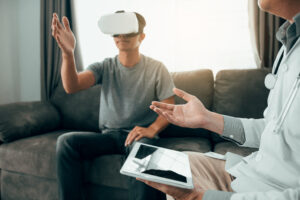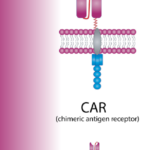
Adobe Stock/wutzkoh
Can VR Enhance Rheumatology Patient Education & Decision Making?
As most rheumatologists can attest, the autoimmune conditions we manage—as well as the treatments for them—are intellectually complex. Eloquently explaining what an inflammatory arthritis is or how a specific therapy for such a disorder works is an issue in both research studies and clinical practice.
Norwin Kandera is keenly aware of such challenges. Professionally, he has spent the past 30 years designing communication tools for international companies, many of which are in the healthcare space. He is also the father of a young woman who, at the age of 18, became one of the first five patients in the world to receive chimeric antigen receptor (CAR) T cell therapy for systemic lupus erythematosus (SLE).
In the past several years, Mr. Kandera has combined his professional expertise with his personal dedication to helping patients with SLE better understand their disease and treatment options. He has partnered with Friedrich-Alexander University Erlangen-Nürnberg, Erlangen, Germany, to create a virtual reality (VR) application, CARSLE-VR, meant to provide patient education on lupus and CAR T cell therapy.
Although the app is not currently available for use outside Germany, Mr. Kandera recently sat down with The Rheumatologist (TR) to discuss this project.

Mr. Kandera
Immersive Patient Education
TR: Can you describe the concept that initiated this VR app?
NK: We aimed to create an immersive journey through the treatment process, helping patients understand their therapy better and make informed decisions. People learn more effectively when they engage in a story or interactive experience, and VR offers a unique opportunity for this [approach].
The tour begins at the clinic entrance, where patients hear personal stories from patients. It then moves to a molecular level, explaining the mechanisms behind lupus-related inflammation. Step by step, users explore the treatment: how CAR T cells are produced, the necessity of lymphodepletion, the destruction of autoreactive B cells, the regeneration of naive B cells in the bone marrow and key aspects of aftercare.
This complex and innovative therapy requires a clear, non-trivialized explanation to aid both patients and doctors. We believe that supporting education is crucial to accelerating the adoption of new treatments and improving patient outcomes.
TR: Who is the intended audience, and how do you ensure accessibility?
NK: Primarily, we intend for the main audience to be patients who are seeking to understand what happens in their bodies as part of the disease process. This understanding is key in allowing them to make informed decisions about treatment, and they need comprehensive, yet accessible, medical information to do so.



